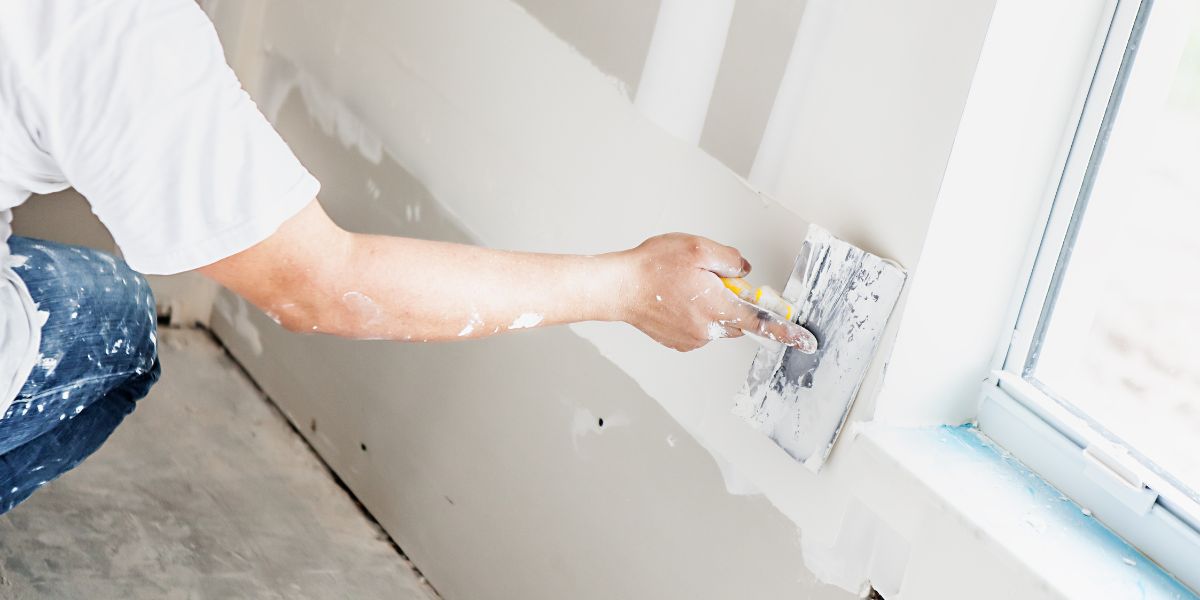Drywall is a common building material used in the interior construction of homes and commercial properties. Over time, drywall can get damaged due to moisture, impacts, or structural shifting. Drywall repair involves fixing holes, cracks, dents, and water damage to restore the surface to its original condition. Proper repair ensures wall strength, visual consistency, and a smooth surface for painting or decoration Drywall Repair.
Common Causes of Drywall Damage
Drywall can suffer damage from various sources. Understanding the cause helps in selecting the right repair method.
- Accidental Impact: Furniture, doorknobs, or tools can cause holes or dents.
- Water Leaks: Moisture from plumbing leaks or roof damage can weaken drywall, leading to soft spots or stains.
- Foundation Shifts: Settling or structural movement causes cracks in walls and ceilings.
- Pest Infestations: Rodents or insects can create holes or chew through drywall.
- Poor Installation: Improper joint taping or fastener use may result in bubbling or cracking over time.
Identifying the source of the damage is essential before performing any repair work.
Types of Drywall Repairs
Small Hole Repairs
Holes under ½ inch in diameter can be filled with spackling compound. This quick fix only takes a few minutes to apply and sand once dry.
Medium Hole Repairs
Holes between 1 to 6 inches wide require patch kits. These kits usually contain a mesh patch, joint compound, and a putty knife. The mesh reinforces the damaged area before applying compound.
Large Hole Repairs
Larger damage over 6 inches requires cutting out the damaged section and inserting a new piece of drywall. The repair is secured with drywall screws and finished with tape and joint compound.
Crack Repairs
Hairline cracks are filled with joint compound. Wider cracks need tape reinforcement before applying compound. Sanding and priming are required before painting.
Water Damage Repairs
Water-damaged drywall must be removed and replaced. The underlying cause of the moisture, such as a leak, should be fixed before installing new drywall.
Tools and Materials Used in Drywall Repair
Professionals and DIY users rely on standard tools and materials:
- Utility knife
- Drywall saw
- Drywall tape (paper or mesh)
- Joint compound (mud)
- Sanding sponge or sandpaper
- Spackling paste
- Putty knife
- Drywall screws
- Screw gun or drill
- Drywall patches
Using quality tools helps achieve a clean and lasting repair.
Steps in the Drywall Repair Process
The steps vary based on the size and type of damage. Below is a general outline:
- Assessment: Identify the type and extent of the damage.
- Preparation: Remove debris, dust, or loose material from the area.
- Patching: Apply a patch or insert new drywall as needed.
- Taping: Cover joints or gaps using mesh or paper tape.
- Compounding: Apply joint compound in thin layers, allowing drying between coats.
- Sanding: Smooth the dried compound using sandpaper or a sanding block.
- Priming and Painting: Once smooth, apply primer and match the wall paint.
Each step should be done carefully to prevent visible seams or surface imperfections.
Average Cost of Drywall Repair
The cost depends on the damage size, labor, and location. Here are general estimates:
| Type of Repair | Average Cost (USD) |
| Small patch (under 6") | $50 – $150 |
| Medium repair (6–12") | $150 – $300 |
| Large repair or replacement | $300 – $800 |
| Water damage repair | $500 – $1,200 |
| Ceiling drywall repair | $300 – $900 |
Professional services often include materials, labor, cleanup, and finishing.
When to Call a Professional
While small repairs can be done at home, complex cases need trained help:
- Cracks near load-bearing walls
- Recurring water damage
- Sagging ceilings
- Electrical or plumbing behind the wall
- Seamless finishes in visible areas
Certified drywall contractors ensure proper safety, technique, and finish quality.
Frequently Asked Questions (FAQ)
Can I repair drywall myself?
Yes, small holes and minor cracks can be repaired using basic tools. For larger damage or invisible finishes, hiring a professional is recommended.
How long does drywall repair take?
Small patches may take 30–60 minutes. Larger repairs may take 1 to 3 days, allowing for drying and sanding between compound layers.
Do I need to paint after drywall repair?
Yes. After sanding and priming the repaired surface, paint is applied to match the surrounding wall. This ensures a uniform appearance.
How do I prevent future drywall damage?
Install door stoppers, repair leaks immediately, and inspect walls annually for cracks or signs of moisture.
What type of joint compound should I use?
Use all-purpose joint compound for most repairs. Quick-setting compounds dry faster but are harder to sand.
Conclusion
Drywall repair is a vital maintenance task for homes and buildings. It helps restore structural integrity, improve aesthetics, and prepare surfaces for painting or finishing. Understanding the causes, repair types, and process allows property owners to manage minor issues and recognize when to seek expert help. Timely repair can prevent further damage, reduce costs, and maintain the overall condition of interior spaces.
